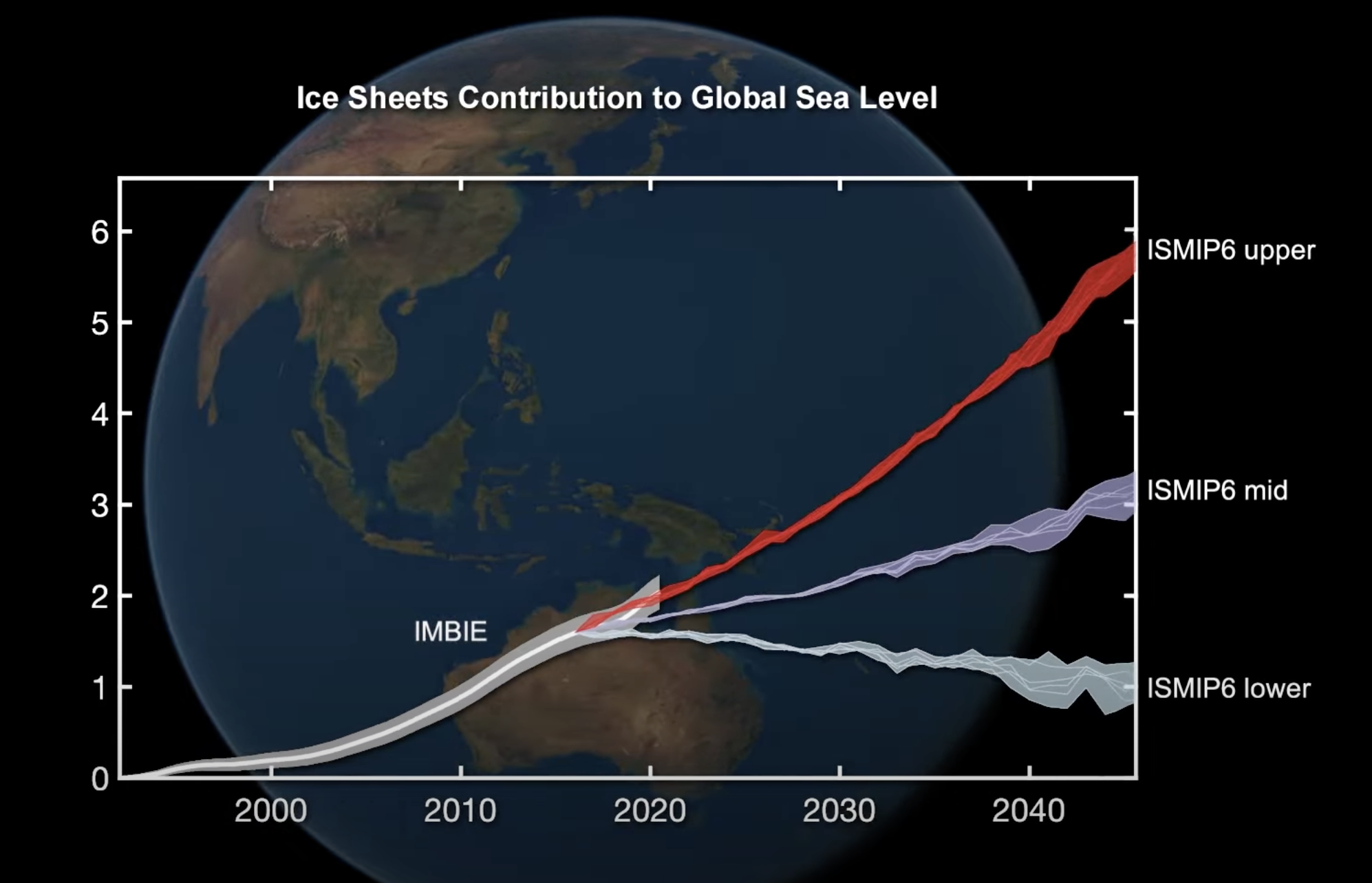Shrinking ice sheets
Satellites reveal melt water from the Greenland and Antarctic ice sheets account for a quarter of global sea-level rise
Satellite observations are vital for monitoring how ice on land changes and, in tandem with modelling, help to understand the processes driving ice loss, improve projections of future sea level and support climate resilience.
Use of multiple long-term satellites surveys of both the Antarctica and Greenland ice sheets reveal they have lost ice every single year, with the rate of loss having increased fivefold since the 1990s – a rate that is currently tracking the IPCC’s high end climate warming scenario.
The results from this study, known as the Ice Sheet Mass Balance Intercomparison Exercise (IMBIE), are used widely, including by the International Panel on Climate Change (IPCC), to understand the processes driving ice loss, improve projections of future sea level and support climate resilience.
Tracking ice sheet changes from space
The international research team, involving members of the CCI Antarctica and Greenland Ice Sheet projects and funded by ESA and NASA compare and combine 50 independent estimates of ice sheet mass balance derived from satellite observations of temporal changes in ice sheet flow, in ice sheet volume, and in Earth's gravity field. Data were derived from missions including ESA’s ERS-1, ERS-2, Envisat and CryoSat missions, as well as the EU’s Copernicus Sentinel-1 and Sentinel-2 missions.
Ice sheets' contribution to sea level rise - past, present and future
The results show that between 1992 and 2020, the polar ice sheets lost 7560 billion tonnes of ice – equivalent to an ice cube measuring 20 km each side.
Melting of the polar ice sheets has caused a 21 mm rise in global sea level since 1992, and now account for a quarter of sea-level rise. Ice loss from Greenland is responsible for almost two-thirds (13.5 mm) of this rise, and ice loss from Antarctica is responsible for the other third (7.4 mm).
In the early 1990s, ice sheet melting accounted for only a small fraction (5.6 %) of sea-level rise. However, there has been a fivefold increase in melting since then, and they are now responsible for more than a quarter (25.6 %) of all sea-level rise.
If the ice sheets continue to lose mass at this pace, the IPCC predicts that they will contribute between 148 and 272 mm to global mean sea level by the end of the century.
With ESA funding, the assessment will be updated annually to make sure that the scientific community has the very latest estimates of polar ice losses.
World's ice is melting faster than ever
As global temperatures increase, the melting of the massive ice sheets that blanket Antarctica and Greenland has accelerated, making a significant contribution to sea-level rise. In total, Earth is losing around a trillion tonnes of ice each year – which is not being replenished.
Professor Andrew Shepherd a leading climate scientist working with ESA discusses how long-term satellite observations from ESA’s Climate Change Initiative are key in monitoring changes in ice sheets over decades.




